Going to Sinai High Mountain Range – the Plan
Sinai — for a long time this meant for me above all a primeval, serene landscape, associated with a lot of history. Little I knew about the details of the peninsula's geography, and hardly anything I knew about the people – if any – living there. Yet my imagination was strong enough to give me all the incentive I needed to plan several holidays in the High Mountain Range of South Sinai, rounding out a very intense 4-weeks business stay in Cairo.
My plan was to climb Mt. Sinai (2285 m, also
Mount Moses or Jebel Musa) and Mt. Katherine (2642 m,
Jebel Katharina), Egypt's highest mountain, and to visit the famous St. Katherine monastery at the foot of Mount Moses. Of course, these mountains, on the normal routes, pose no alpinistic difficulties. Rather the plan was – besides breathing mountain air after the long period in Cairo exhausts – to collect impressions, cultural as well as with regard to a landscape and its soul. This is what this trip report is trying to reflect – fascinating 3 days in a lucent natural surrounding and with interesting people, and to give some useful facts as to where and how. For any flaws in my English I want to apologize right from the start.
1st Day – Riding from Cairo to St. Catherine
Saturday, 10. February 2007 — At 10:30 I find myself at the International Bus Terminal in the Cairo suburb of Abbasiya, ready to start. The "East Delta Travel" has a regular bus each day to various destinations on Sinai, making the something like 450 km to St. Katherine in something like 6 hours. I had bought the ticket 2 days in advance, including a seat reservation. Notice the price of 40 £E (Egyptian pounds), roughly 5.50 Euro, for the one-way ticket. A taxi trip would have amounted to 15 times this price. The bus trip means plunging into a completely arabic setting: not a single European tourist besides me, all writings only in arabic, and most of the people here in their traditional clothing could surely not be expected to speak English. The bus terminal is guarded by several gunmen in uniform, who are so ubiquitous in Egypt.
The bus comes in time and also takes its leave quite in time, setting out on the chaotic Cairo traffic (yet which on second sight reveals itself as quite calculable, albeit the – inofficial – rules to be applied are very different from those of central Europe). The bus is occupied up to the last seat, almost exclusively men. During the first 2-3 dozens of km on both sides of the road other suburbs under construction can be seen. The megacity is still growing explosively. After that, the mostly flat desert takes over on both sides of the 4-lane route to Suez.
The driver really gets out everything of the Scania bus: for most of the time the speedometer needle is at its limit of 130 km/h (formal speed limit: 100 km/h). After 1.5 hours we reach Suez (pronounced Swaiss with a long ai like in air). Suez is an extended, friendly looking city without huge sky scrapers and as such only about 40 years old, because it has been more or less completely destroyed in the fifties. After taking fuel at the servicing site of East Delta (close to a gorgeous mosque with 4 towers), we continue to the tunnel beneath the famous canal, located about 20 km north of Suez. Somewhat before we have to pass a checkpoint (like on entrance to Suez), which is said to serve mainly for getting smuggling, mainly of drugs, under control. After the tunnel, we find ourselves – according to the geographer's definition – in Asia.
An hour poor of events later, after driving along the flat west coast scattered with towns and oil derricks, slowly hills, then mountains begin to appear, and then we finally leave the coast, heading inland to Wadi Feiran, which holds the famous oasis Feiran. In order to see more than only through the side window, I change place with a boy, who has been sitting mostly sleeping on the aisle stairs behind the driver. By degrees both of us make a bit of friends. He is 13 years old, comes from Gizeh in Cairo and speaks English astonishingly well – from school, as he tells me. The oasis, with a long Christian history in the first millenium AD, extends over several kilometers and has nothing paradise-like (as promised in the travel guide), rather the huts and palms appear scattered by chance somewhere between the scree and heaps of soil (dumping heaps of soil everywhere seems to be a prime qualification in Egypt).
Wadi Feiran is a long haul. It takes considerably more than an hour until a final checkpoint is reached, where I – as the only tourist in the bus – have to pay a small entrance fee to the national park Sinai high mountain range, created about 10 years ago.
![Entering St. Catherine on Sinai]() The final meters to St. Catherine
The final meters to St. Catherine
At dusk and some 6 km later we arrive at Katherine Village or Milga. The bus stops right in front of Plaza Hotel. I have no place where to stay so far, but this appears to me a bit too noble and expensive, so I first cross all of the village, over 1 km long, in search for a cheaper and more homespun place. In vain, however, since after the Plaza and its 2 neighboring hotels the village appears to offer very little related to tourism. So I decide to try El Wady el Mouquduss, the most friendly-looking hotel and just next to Plaza, and with 20 Euros per night, breakfast included, I'm actually quite happy.
2nd Day – Ascending Mount Moses
Sunday, 11. February 2007 — Taking my time, I have breakfast at about 9:00 in the morning. It consists of tea, small rolls, a bit of jam and cheese, an omelett and the all-accompanying tomate-cucumber salad (naked – I have to struggle a bit for making clear my wish for some olive oil, which is then readily fulfilled, however). Then I set out for the famous St. Katherine monastery, as my starting point for collecting first overall impressions and for the ascent of
Mount Moses. This mountain is attributed by the thousands-of-years-old legend to be the site of 2 notable events, well known to all of the 3 native religions here: God speaking to Moses from the burning thornbush, sending him to Egypt to get free the Hebrew people from Pharao; and later on the way of the Hebrews to Palestine God speaking again to Moses on the top of this mountain, giving him and the people the 10 commandments as the basis of the union between God and his people. These condensations of collective memories have attracted in the 4th century AD the early Christian monks, triggering a couple of centuries later the foundation of the monastery.
The air is fresh and very agreeable (I immediately appreciate to be at 1500 m elevation), and the sun radiates from a sky of a flawless blue, irradiates the naked red granite mountains, which tower above the village by 500-700 m.
![To Mount Moses]() The valley behind the monastery
The valley behind the monastery
On the about 2 km of way to the monastery I quickly realize that I absolutely need some protection of my head against the sun, otherwise headache is assured. Since I have preferred to leave my tourist cap in my luggage in Cairo, I head for one of the kioskes at the bus parking lot some 500 m before the monastery, and buy one of these nice Bedouin scarfs (30 £E). Then the guy asks where I go and if I need a guide to the summit. I agree, although I also would not object to walking alone and letting my mind wander. But of course I'm also interested in getting into contact with the local people, and "selling" this impressive, history-loaded landscape is a main pillar of their income-creating work, which, I think, should be respected. By the way, the price of about 8 Euros for almost a whole day seems very modest to our standards.
My guide will be a 22 years old and immediately very sympathic Bedouin boy.
![On the way to Mt. Moses]() My guide
My guide
He does not choose the famous stairs ascent, and in an ample arc we reach a pass leading to a neighboring valley. This pass offers a nice view, and I propose to have a break. So we sit together, relaxedly alternating between chat and peaceful hush, have a drink from my water bottle and nibble my trail mix. The latter proves to be a great hit, and my guide eagerly explains that almonds, walnuts and grapes also grow here in the desert gardens which are numerous in the valleys around.
![Mount Moses]() Me in front of Mt. Moses
Me in front of Mt. Moses
Slowly we gain in altitude, and after a passage directly beneath the ≈120 m high summit wall – whose granite slabs have the appearance of a heap of hippo-backs – the way, suited for a buggy so far, gets narrower and steeper, but is now furnished with artificial steps. Snow rests begin to show up, as several days ago there was a big thunderstorm. About 50 m below the summit we pass the last of several small huts with Bedouin wardens, ready to serve a coffee and waiting for overnight guests. My guide stays here with his buddies.
Thanks to the noon time, I'm almost alone at the top (in the morning hours all the people of the world who have never seen a sunrise are reported to clump together here, and I have deliberately avoided this). I just sit there and look around for a long time.
![On Top of Mt. Moses]() Looking in the expanses towards the north of Sinai
Looking in the expanses towards the north of Sinai
It is a limpid sky, and in particular looking north and east one really has a sensation of being singled out, since the mountain chains there quickly loose on altitude, opening a very wide view. South the ≈300m higher
Mount Katharina is visible some km away - my goal for the day after tomorrow.
![Mt. Katherine]() Mt. Katherine
Mt. Katherine
Sinai, up to now for me only a geographic object on some map, awakens to reality. However, the biblical attributes of this mountain (which are also firmly anchored in Koran) don't catch up with me in the same way – for me belief has little to do with such kind-of-legend attributions.
After about 1 hour I leave the summit to rejoin my guide. I set out to excuse my long absence, but one of his buddies immediately comforts me "Oh, he's not busy". At the hut we are sitting for another good while. A ≈14-years-old Bedouin boy prepares an Arabic coffee for me (for some weird reason called Turkish coffee in Egypt) and I buy as a souvenir one of the nice Alabaster camels which are on display along the way up. The atmosphere is completely relaxed and I realize that by the presence of my guide I'm so to say temporarily a member of the family, not just a stranger or tourist to whom one must sell something.
![Bedouins in front of a guest hut]() Bedouin guest hut nearly on top of Mount Moses
Bedouin guest hut nearly on top of Mount Moses
For the next 90 minutes or so we adopt more or less the speed of my guide, galloping down to the 1st Bedouin hamlet at about 1700m, and passing long gardens with olive trees, grapes and blossoming almond trees, which stretch out the long Wadi el Arbein, the valley of the 40 Martyrs. The gardens belong to the monastery and are cultivated by the bedouins on behalf of and paid by the St. Catherine monks, as my guide tells me. At about 16:00 we are back in Milga.
We are just about to say good-bye near my guide's dwelling, quite close to my hotel, when we meet his brother in a 4WD-Jeep. He has an idea where to buy the local map I'm looking for, and after this joint action by the 3 of us I'm invited to their home for a tea. I'm a bit hesitant because I'm not sure how serious to take this, but then I follow. At the entrance he is cordially welcomed by his mother, who has a scarf around her head but is not veiled, and to my surprise she also extends her hand to me in a very free manner, looking me square into the face – something I did not find with my Moslems collegues in Cairo. The bedouin houses here are such that one constructs single-flat concrete walls around roomlike spaces. Where one wants to have a room, one simply adds some girders and covers with corrugated sheets. After a bare empty room we enter the living or guest room, which is equipped with carpets and pillows and a homey fire (the latter actually being an electrical plate with a glowing heating coil). We take off our boots or sandals and sit down. Several family members are coming and going to greet the stranger, among them a young barefooted wife (many are barefooted in sandals outside even at night with temperatures below 10°C) with a small child. The mother serves the tea, and the brother conducts the mainly political conversation. Additionally, I learn quite a lot about the social structure here, e.g. that family means all of a kin (this family has about 300 members!), and that kin and tribe are the primary reference points, not what we westerners mean by family. Another important point is that these Ghibaliya-Bedouins have come from Romania some 600 years ago – the why I cannot find out, however. It also becomes clear that Bedouin – in contrast to nomad – means not so much a way of life (most Bedouins today live in houses) but is rather an ethnical notion. The Bedouins here also do not really speak arabic, but some proper idiom; however, "the Arabs understand us". When I am invited to dinner, I start to back out – I think this is the point to decline for reasons of politeness, and apart from that I'm really tired and want to lay down a bit. And indeed, when after some more minutes I signal departure by "If you allow I would now like to go to the hotel", I am friendly accompagnied till the entrance to say good bye.
However, halfway to the street I get trapped by the gang of about 9-13 years old children, which I have already met yesterday evening, soliciting me with "Give me caramelo, please, caramelo!". I had only been able to free myself with the promise "tomorrow", and now I see half amused, half shirty what is coming up to me here. In a way, the small hands reaching out to me are really cute, and looking into their well-proportioned faces with the brown skin and the dark eyes shows something fascinating and unfathomable. On the other hand, the untamed pushing desire to get something is irritating and, what is more, depressive in view of the placid friendliness I experienced today with my guide and just now during the tea-chat. But today is "tomorrow" and I have to keep my promise, and after all, I am armed now! I've equipped myself with a small package of dextrose tiles from my first-aid kit, which now enters the play. The tallest of the boys immediately claims the whole package for himself, but I'm taller still and make clear: it's
me who distributes! In each paw a tile disappears, but in a jiffy I see the same paw empty again: "I've got nothing yet!". Eventually I snatch one of the boys, who gambols and grabs most, by his wrists, hold them tight and catch firmly his eyes. Bewildered and startled he and the whole gang calms down, but he does not sidestep my glance. Having looked each other some 10 seconds square into the eyes, the remaining distribution proceeds in a more civilized manner. After the last tile is away, and after I have doused an afterglow of "Give me ..." with "It's over", the gang dissolves peacefully towards their backyards, and the way to the hotel and to my bed is free. However, my thoughts are still a bit absorbed by what has just happened. I find it remarkable and touching that in the end they were quite content with these minimal gifts of dextrose tiles, receiving was apparently more important than the received thing. And it was a win-win-game:
they did not simply abandon their "right", and they have released and justified
me in declaring implicitely my promise as kept.
3rd Day – Visit of the Monastery and other Experiences
Monday, 12. February 2007 — This day my plan stipulates only the monastery, which was closed yesterday. Today it will be opened 3 hours in the morning for those hungry for culture or captured in pious emotion. For me it will be a rest day, filled with looking and thinking. Apart from the litte excursion only reading and writing emails in the "Fox-net", the local internet coffee-shop (without coffee, there are only computers), is envisaged. However, it should turn out that this mountainless day was to become not less intriguing and rich in experiences than the preceding and the following one.
![Milga hotel]() Hotel patio
Hotel patio
Thus I leave the hotel around 9:30, without any provisions and barefooted in sandals instead with mountain boots - thanks to the friendly sun in an again flawless blue sky, which makes the fresh temperatures very agreeable.
![Monastery St. Catherine]() Way to Monastery
Way to Monastery
About halfway to the monastery I hear my name called after me. It's my guide of yesterday, who comes running after me to join me for the rest of the way to the kioskes. About his job today he does not yet know.
There is much more visitor traffic today than yesterday.
![Scenic Sinai]() Camel taxis
Camel taxis
At the monastery, camels dispose of the tourists they transported from the kioskes up here, and everywhere Bedouin boys try to sell small pieces – egg-shaped alabaster or onyx stones, geodes with nice rock crystals inside, or foto-brochures about the monastery and Sinai. After a coffee shop and guest room area the wall of the monastery comes in sight with a beautiful small door, guarded by a picturesquely arranged Beduin,
![Monastery Private Entrance]() Monastery guard
Monastery guard
who prevents me from entering – the entrance to the part open for tourists is round the corner through a still smaller door. Actually the range accessible to ordinary tourists is very limited: the patio behind the wall, the church, and the descendant of the famous flaming thornbush. Since I'm rather interested in the atmosphere and a general impression than in details of history or art, I just enter the church, stay sitting there for quite a while while the stream of tourists is edging through, and let my mind wander.
The monastery counts to the most famous and in fact the most remarkables (at least for a long time) of Christianity. More than 1500 years of uninterrupted history since its foundation by Byzantine Emperor Justinian to shelter the already existent hermitages, at a place of central holiness which has its beginnings maybe another 2000 years in the past: it is believed that here Moses was addressed out of a flaming thornbush by the inconceivable God, whose name dissolves and hides in the covenant and appointment "I am present – and now you go to Egypt and help your brothers!"; and that here God gave the Hebrews after their release from the yoke of the Pharaoh through the hands of Moses the Ten Commandments, which are key for 3 religions up to the current day and are yet so much ignored. I cannot but state that today's relevance of the monastery – notwithstanding the wealth of the very old icons and codices it houses – appears somewhat elusive to me. Of course it is granted that the monastery constitutes an important touristic engine, a sink for much money from greek-orthodox countries and, through that, an employer for many of the local people here. But, e.g., the potential which is embodied in the accepted presence of a mosque within the monastery, abreast of the church, since a millenium or so: is it used for the promotion of a peaceful and effective interfaith dialogue so necessary today, in particular between the Christian and the Moslem world?
![The burning Thornbush]() Grasping the Flaming Thornbush
Grasping the Flaming Thornbush
Vis-a-vis the entrance the granite slabs gradually rise until the walls delimiting the valley to the north, and like many other visitors I also climb halfway up to look from above at the composition and the milling masses. I install myself on one of the boulders there, and become witness of a remarkable if ugly scene, like a bad story on TV: A sportive tourist with big backpack, before racing up the detrital couloir behind us, is engaged in a transaction with a Bedouin boy of about 12 years. The latter seems to have approached the former in an abortive attempt to sell a stone or so, but appears unwilling to go empty-handed. They are bargaining over some cigarettes the tourist has given him, evidently a bit uneasy because he insists "but only for your father, not for you!" (looking at the brown teeth of many youngsters here it seems quite clear who really smokes the cigarettes – an impression which my guide of the next day affirmed with a grin). Then the story enters the next and worse level. The boy begs for water. Now, cigarettes – that was apparently still sort of okay, but with regard to water our tourist stays adamant: "Only if you have
your own glass!" he replies repeatedly to the boy's repeated demand, and finally sends him away thirsty. I am knocked over and feel angry and sorry for having nothing with me for this short excursion.
A bit to the right the wall appears well climbable, and finally I can no longer resist. Coarse-grained, warm granite leads me over small pitches, ledges, a 5m-dihedral and several slabs to a new viewpoint about 40 m above the former. Here, in this greater distance to all the turbulences below me, I linger quite another while.
![St. Catherine Monastery]() The monastery complex
The monastery complex
On my way back I get myself convinced by one of the young merchants to buy a nice blue stone egg – anyway I still need some souvenirs. The next stone-selling boy offers beautiful crystal geodes, another valuable souvenir for my collection, and above all with 18 £E (about 2.50 Eu) not expensive by our standards. Further down, the next (and last) merchant boy, having accepted that I won't buy from him something I have already, still does not want to go empty-handed, and so he asks bluntly and innocently "Give me some Bakshish money, please." For such cases I always hold a small amount of 1 pound- and smaller left-over notes ready in my pocket, and he gets a 50-piaster bill (some 6 Euro-Cents), the only one I still have. "Is this Bakshish money?" I ask him, and, quite contented, he confirms - after all, he has not been ignored, has not missed out, and again this counted more than the actual number on the bill.
![The western valley]() The valley west of Milga
The valley west of Milga![Bedouin boys in Fox-Net]() Fox-Net
Fox-Net
Most of the afternoon I spend in the FoxNet and – being endowed meanwhile with a quite red sunburned face – in search of a sunscreen. The latter unfortunately in vain: a lot of the small shops here stock a diversity of normal skin creams, but I seem to be the first to ask for a sunscreen.
Later in the afternoon I go for a little walk to the west of the village, where a broad valley leads up to a pass - I would like to throw a glance to the other side. A boy is walking a few tens of meters in front of me, and after taking notice of me, he steps aside, evidently waiting for me. Oops – prior to plunging into a new encounter, I want to test his pertinacity. So I turn around and delve into the impressive view of the around 500 m cliff which comes down from Mount Moses on the eastern side of the village and is now bathing in the light of the evening sun. Chaled pertinaciously waits, drawing figures in the sand with his feet. So I continue after a while, and he hooks up with me quite naturally. He would be a really handsome boy, in his long olive-green habit and the red scarf around his head, had he not the brown teeth many youngsters here have. While we are walking and chatting, I notice that he has cold in the cool and windy evening, and under the thin fabric of his habit sleeves I feel nothing else. He says he's only 10 years old but speaks a rather good English which he has learned at school. I give him a chewing gum and later 2 £E, but he aims at something different, and at last he has got himself ready to ask me if I couldn't give him a camera – he would give me in turn all the 3 egg-stones he has. I feel surprised and touched – maybe he really does not know to realistically compare the different values, but in any case there is nothing pushing or impudent in the way he utters his question, only the big wish and (thus it appears to me) the confidence that here is someone from the far, incomprehensible western world, who could fulfill his desire, and for that he offers all he has to offer. Of course I do not want to give away my camera with the half-full film (which I haven't with me anyway). Warily I try to explain this to him, and he seems to – at least rationally – accept. A bit before the pass I detect a possibility to climb halfway the mountain to the left, and I say goodbye to Chaled. He continues his way to (probably) the village 1.5 km behind the pass, then he turns back and meets me again on the mountain slope, renewing his quest. Indeed, if I had had the camera with me, it really would have been only a small step to relinquish it to him, so serious and full of a decent longing appears his wish. Perhaps, it comes to my mind, he strives for becoming a photographer, and his parents have neither the means nor the understanding to pave him this way. However, the situation standing as it is, the No and the Perhaps remain, and Chaled will continue to try to sell a few stones to the monastery tourists, instead of earning his money with creative photography, until he meets someone more generous than me.
Author's note 14/06/2022: I will never forget Chaled ....
4th Day – Ascending Top of Sinai
Tuesday, 13-Febr-2007 — This day will be a mountain day again, devoted to Sinai's highest peak Mount St. Katherine. At 8:30, my guide is already waiting in the hotel lobby. But before we start I hasten to profit from the sunscreen source I have detected at breakfast: with a few fingertips of suncream with protecting factor 25 an overwhelmingly friendly Englishman saves me from my dreadful fantasies of how I will look this evening after another long day in the relentless sun! However, at first there's nothing outside to support such fantasies, because there is an unexpected cloud cover, and the weather is noticeably colder and much more windy, and despite a sunnier noon it will stay so for this whole day.
![Wadi el Arbein]() Entrance to Wadi Arbein
Entrance to Wadi Arbein![Wadi el Arbein II]() Gardens of Wadi el Arbein
Gardens of Wadi el Arbein
Again we pass Wadi el Arbein, and only after the Bedouin hamlet the ascent proper over the remaining 900 m of altitude difference starts. The character of this south-bound valley is considerably more alpine than the Mount Moses ascent, much more scree and rugged walls instead of the hippo-back appearance. The way winds up in countless hairpin bends, and talking with my guide or just following him in hush I hardly notice how we gain in elevation. Halfway up the valley widens and provides good views on Mount Moses.
![Mt. Moses]() Mt. Moses
Mt. Moses
After about 600 altitude meters we reach the western rim of the valley and switch over to the broad summit flank, where again hairpin after hairpin leads up to the summit rocks. These looking luring after this long walk, I cannot but climb the last two dozens of meters or so, instead of staying sedately on the way. Some 4.5 hours after our start in Milga – including 2 breaks – we reach the summit.
![On Mt. Katherine]() Mt. Katherine - south
Mt. Katherine - south![Mt. Katherine]() Mt. Katherine – north
Mt. Katherine – north
My guide redescends after a few minutes some meters to prepare tea in a wind-protected corner, while I stay to seize the panorama: in the south thick clouds are surging over a range of summits which appear only slightly lower than mine, to the north the sight – passing the locked-up chapel – is clear. Even more clearly than from Mount Moses it is evident that Sinai's high mountain range has actually a quite limited extension. Then I follow the scent of the fire and hop down the few steps. My guide has managed to light and entertain a fire with the few bunches of scrub he collected on the way, and to cook and keep warm a real cannikin of tasteful tea. Furthermore, we have a can of tuna and delicious freshly baked pita bread from his mama - another very cozy summit time.
![Picnic]() Mt. Katherine - picnic
Mt. Katherine - picnic
After the break I summit again and stand looking in particular north for a long time, playing the mental play I play increasingly often: now, just now is the moment when I
am ... (present here and look into the expanse of Sinai, ...), in just a short time it will be "I
was ..." – past, irrecoverable past. This play I also repeat on our long, long descend (I cannot remember having ascended so much!): now we are sitting again at the rim of the valley, still higher than Mount Moses - and already it is past; now ... – and already it is past.
Back down in Wadi el Arbein my guide proposes to use for the way back to Milga a parallel valley directly beneath Mount Moses. This valley reveals a very pittoresque scenery, a perfect setting for a certain type of movies. It also offers a very nice view to the Moses summit, which appears rather flat from here. We pass a long impressive climbing wall several hundred meters high, and at the end of the long, more or less horizontal valley a breathtaking view upon Milga, about 200 m lower, opens in the light of the last sunrays. A gorgeous farewell from Sinai High Mountain Range!
![Milga]() Evening view over Milga
Evening view over Milga
Descending to the village my guide shows me his garden, hidden from the village by a small hill-chain, to which he comes nearly every evening to water the plants and to make merry with his friends. A lovely place and a very homey vision, which, however, also spotlights how limited the possibilities for activities are for the native people here. We end just at the backside of my hotel and say – this time quite unspectacularly – good-bye.
I feel a bit sick, like upcoming fever. It appears that I have caught a cold in the final very draughty valley. Don't feel like supper. Yet there remains something very important to do: I have to go to the local subsidiary of the Egyptian Bank to replenish my cash stock which are not sufficient for paying the hotel (the hotel itself is not capable of accepting a credit card). Thus I have to incur again the long walk to the other end of the village. There the catastrophy I have been afraid of happens: the transaction cannot take place because my data are not transferred across the line to the head office (I have the feeling that the employee who explains that to me has known that in advance). I insist on severeal repeated shots because I really don't know what to do. Vain endeavour. It only rests to change my last 10-Euro-bill, but this actually is not of much help. During waiting I have the occasion to watch quite a lot of young people who change in what seems to be their income of the day. I'm quite surprised which noble Euro- and Dollar-bills are handed over the counter. In the hotel I have to make an outright confession that I cannot pay fully this last night. But the direction of the Wadi el Mouquduss proves generous and noble-minded: no problem, I shall simply look at the hotel as my second home. Gratefully I promise to send the missing amount from at home. Then I immediately go to bed, in feverish heat all the night long. Luckily I wake up by myself in time, because the agreed wake-up call failed to come. A few minutes to 6 a.m. I'm standing in front of the hotel, waiting for the bus in the beginning dawn, feeling sufficiently well again thanks to an Aspirin and a lot of water I drank during the night. The bus is almost in time, we leave the still mostly sleeping St. Catherine/Milga, leave the mountain scenery of High Sinai I have become so familiar with these last 3 days, but now I leave Sinai, leave Egypt (what a feeling after almost 5 weeks in Egypt to enter the airport and then the plane home-bound!), and after 16 hours I'm back home.
Epilogue
These Sinai days constituted quite a deep experience for me (which I hope I have managed to convey). One important point that has contributed to that is surely that I took 3 full days for this small yet concentrated region. Originally I had planned to have a bathing trip to the beach on the 2nd day. Thanks to God I didn't – this would actually have spoiled the integrity of these days and, while perhaps broadening my experience, it would surely not have deepened it. All the more I strongly discourage anybody from doing the inverse (what is of course often done): trying to eke out a perhaps boring bathing holiday by a short trip from midnight to noon for seeing the sunrise on Mount Moses and the monastery in a one minute go. Another point was, I think, not to have premises whatsoever about the local people, to refrain from any judgements and to see the person in the first line, not just their function for me – this may seem a platitude but is surely too often disregarded and is especially important in Arabic and African countries. Trying to line in with the local way things are going pays off, and among other things I think this is in particular true when it comes to the at first sight vexatious "Bakshish money" and other forms of small business. I would advocate to play this game in a reasonable way, having small bills always ready in the pocket, and thinking about it as some sort of justice – this changes the whole thing a lot, from the side of the visitor/donator as well as from the native's/receptor's side.


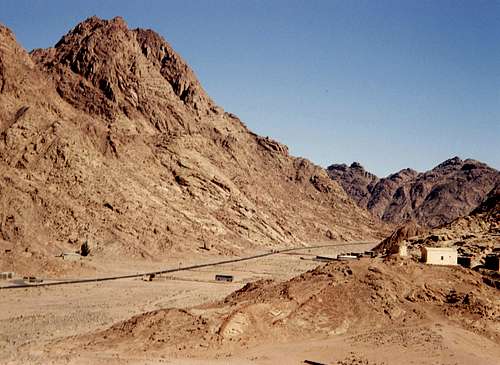
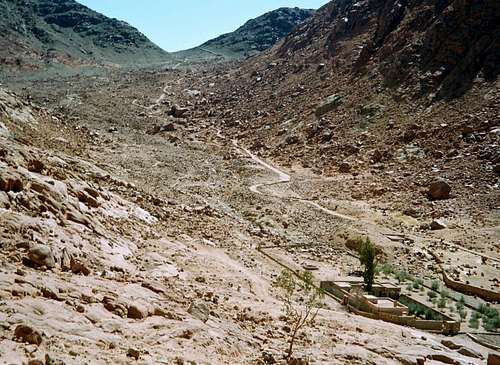
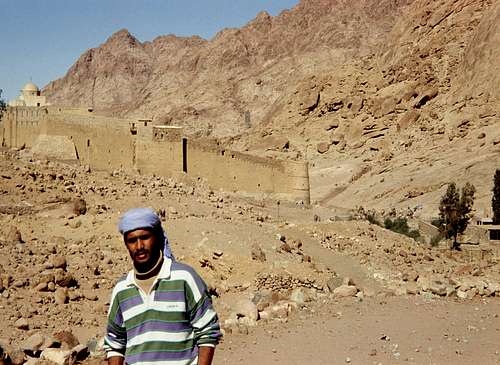

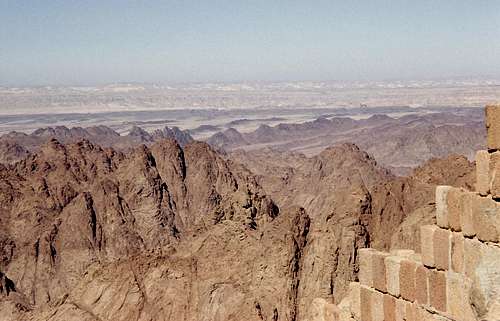
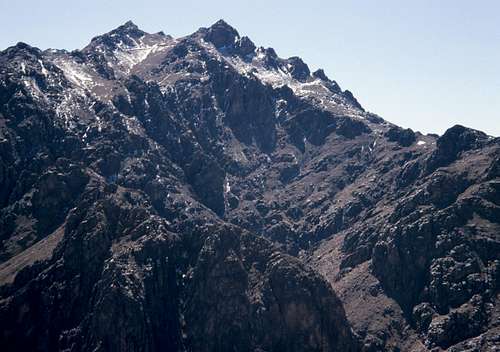

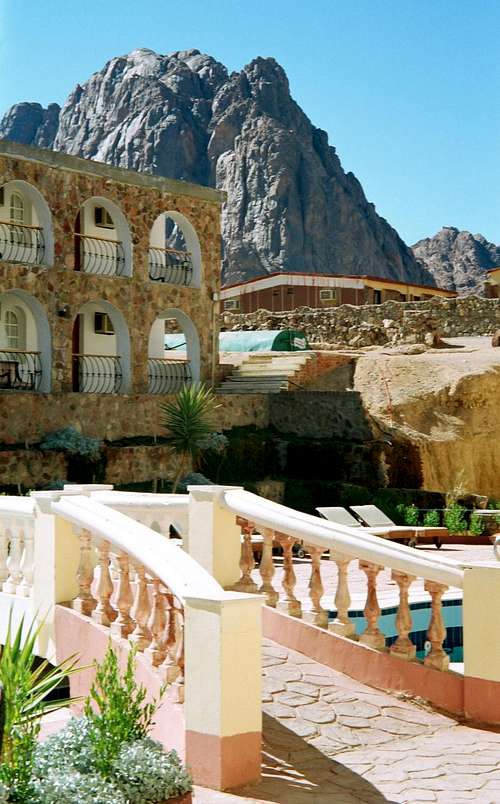

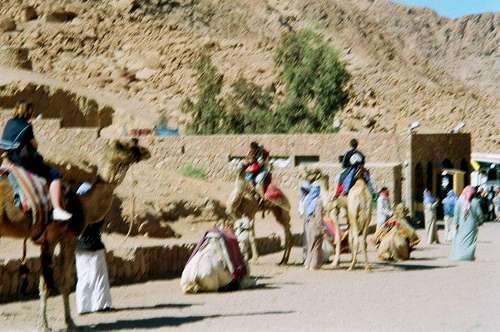

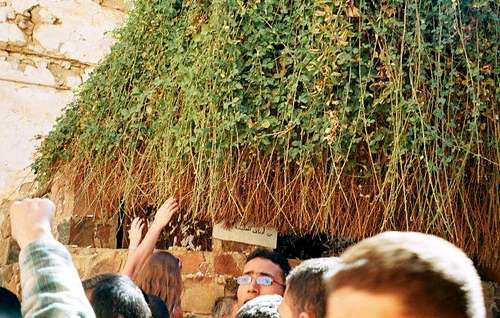
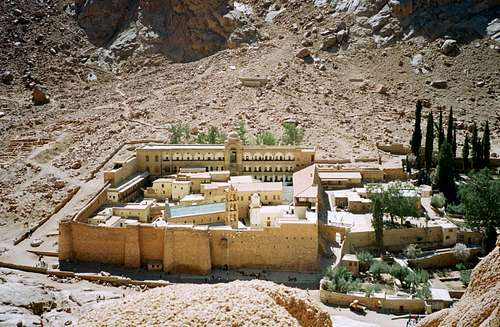
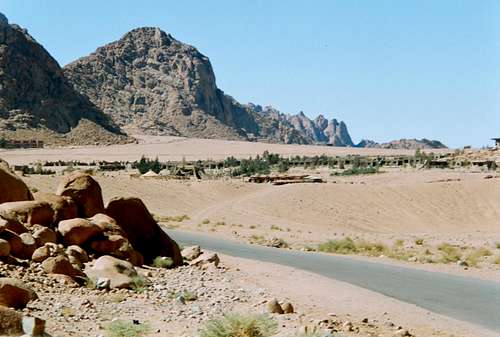
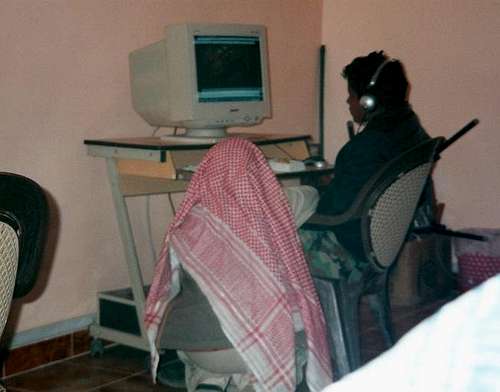
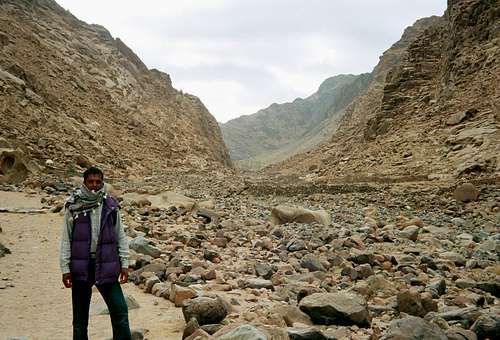
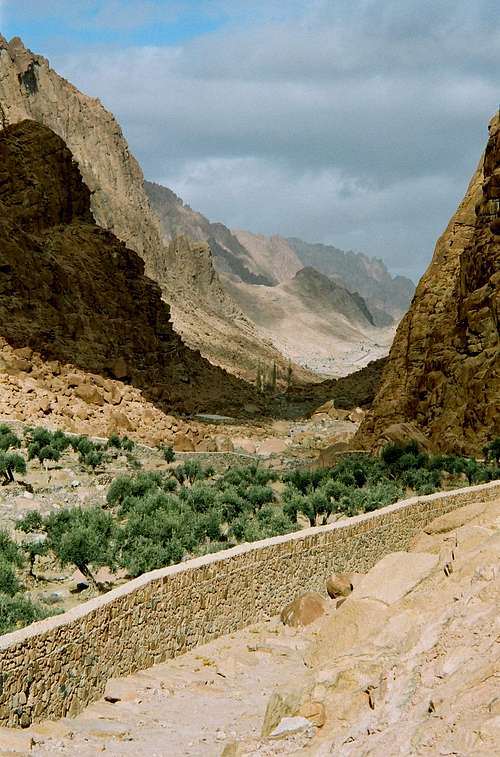
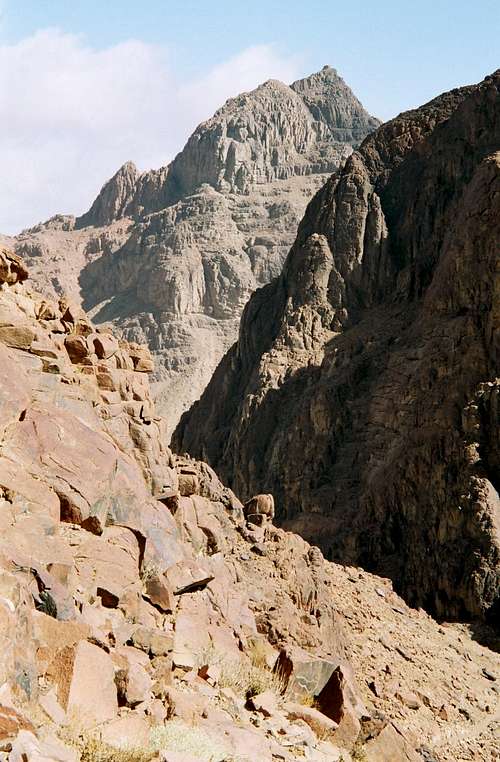
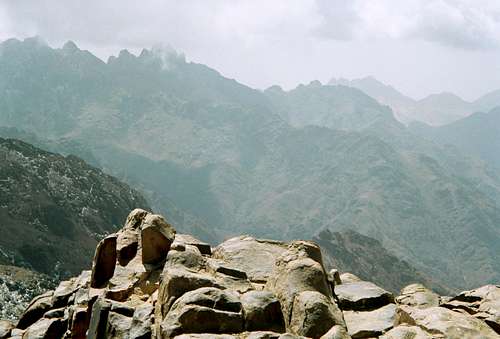
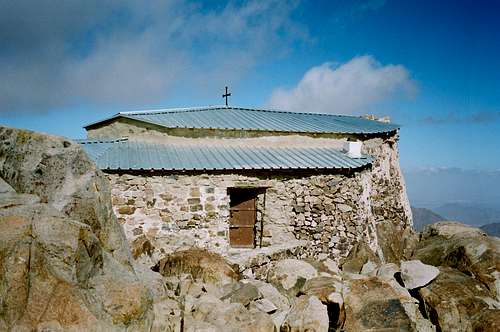
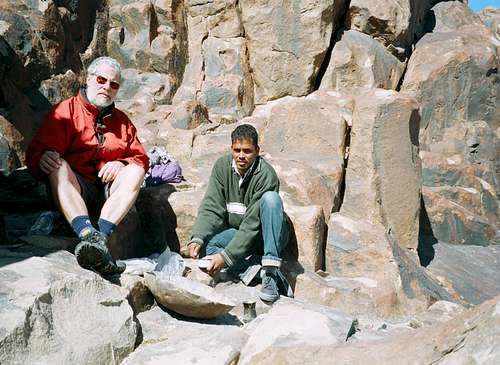
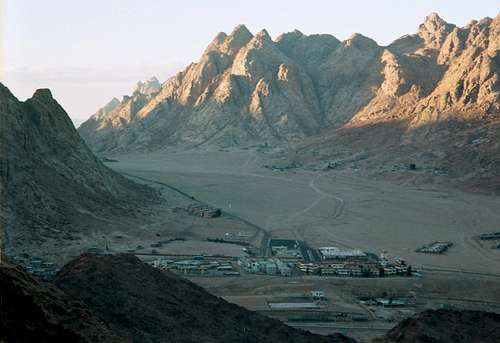




Comments
Post a Comment